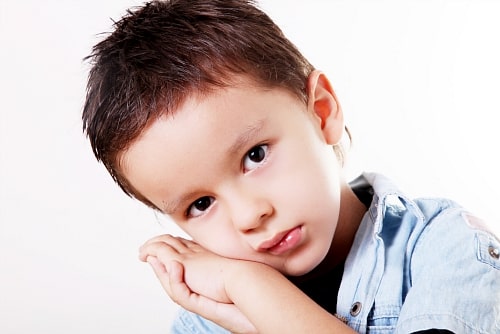How Does Speech and Drama Build Self-Confidence
Working with children presents itself as a mix bag of joyful and challenging experiences.
Imagine this scene, a show and tell presentation in class, there is a ruckus from kids who are laughing and enjoying themselves. Pan left and pan right, things are not all they seem to be. We observe a few students with the look of fear plastered on their faces. Up to the front of the class they are coerced to go. A blank expression replaces the fear and they barely stammer a few words. Attempting to reconcile the scenario in our head so that it makes sense to us, we use a negatively charged statement to encompass how they are feeling “Oh, they are just shy!”.
However, what educators and parents might overlook are the sequence of events that have led up to that very point.
Self-esteem is a complex facet of a child’s being. A child craves love, attention, acceptance, recognition and respect among other things. Self-esteem is the evaluation and realization of an individual’s own abilities. In the views of a child, it can be inferred by the contentedness or discontent they get when they reflect on themselves. A child with a high self-esteem would be seen as being more proactive in various settings. In social settings, they would be more communicative and willing to engage in conversations with those present. In a classroom setting, they would be raising their hands and answering questions or raising queries to instructions.
Now, we focus on the child with a lower self-esteem. In a social setting, they can be seen keeping to themselves. In a classroom setting, they would avoid eye contact when questions are posed to the class, hoping and praying that their name is not called out.
 Should those exhibited traits not be addressed, it could lead to a child lacking in confidence in their own personal abilities. Two major factors of self-esteem are parenting styles and the child’s immediate surroundings in terms of the quality of their environment. As parents, we have the duty of raising up our children to be proficient in tackling our ever-changing world. We employ different methods to ensure our child is protected and nurtured. As for their immediate surroundings, the microsystem which includes family, peers and school play a vital role. This system has a significant mechanism called bi-directional influences. It shows that when a child interacts well with their environment and the various factors in the environment interact well with the child, their self-esteem will be enhanced.
Should those exhibited traits not be addressed, it could lead to a child lacking in confidence in their own personal abilities. Two major factors of self-esteem are parenting styles and the child’s immediate surroundings in terms of the quality of their environment. As parents, we have the duty of raising up our children to be proficient in tackling our ever-changing world. We employ different methods to ensure our child is protected and nurtured. As for their immediate surroundings, the microsystem which includes family, peers and school play a vital role. This system has a significant mechanism called bi-directional influences. It shows that when a child interacts well with their environment and the various factors in the environment interact well with the child, their self-esteem will be enhanced.
Speech and Drama is a medium which allows participants to vicariously partake in improvisation and processes which make up the human experience. The teacher or instructor will guide the class in their verbal and non-verbal aspects of speech in a multitude of scenarios through enactment. The children will be able to pick up on subtle physical cues which may be demonstrated by others when they are experiencing negative or positive emotions e.g. anger, happiness or sadness. Often, Speech and Drama focuses on life experiences which requires individuals to work together as a team, which in turn enhances their social skills, such as two-way communication and turn-taking.
Furthermore, when a scenario is introduced to the children, they would have to plan and execute their actions. This would require them to derive socially acceptable solutions which help mirror real life. This could be related to new experiences or even past experiences which have had negative outcomes. This exposure and guidance to life’s challenges is structured and allows children to safely explore the full spectrum of the human experience. Additionally, it teaches and conditions children to face their challenges with confidence. Speech and Drama includes public speaking, which encourages children to share their opinions and ideas. They might find themselves placed in a scenario where they are delivering their ideas in a sequential style to a group of their peers or even adults.
 Through the power of Speech and Drama, the stigma from such daunting life challenges could be reduced (extinguished) and broken down into a checklist of steps. There would be an increase in stress tolerance and flexibility which are good EQ skills to acquire. This makes such challenges digestible, effortlessly absorbed and conquerable.
Through the power of Speech and Drama, the stigma from such daunting life challenges could be reduced (extinguished) and broken down into a checklist of steps. There would be an increase in stress tolerance and flexibility which are good EQ skills to acquire. This makes such challenges digestible, effortlessly absorbed and conquerable.
As such, the controlled exposure to life’s experiences through Speech and Drama is able to encourage children in various settings, social, classroom or others. This allows them to take on the challenge of life head on. This in turn leads to an enhancement in self-esteem over the various domains which leads to an improvement in their self-confidence.
In conclusion lets the lay the statement of “Oh, they are just shy!” to rest and focus on the underlying issues which would lead to healthier and more confident children!
Written by
Thalvin Sandhu
Educator at LoveKids / LK Academy
Bachelor of Arts Psychology and Neuroscience
Bachelor of Business Economic and Finance
LoveKids Serangoon Gardens
24A Maju Avenue
Singapore 556696
LoveKids Sembawang
407 Sembawang Road
Singapore 758386
REGISTRATION
ABOUT US
SPECIALIZED PROGRAMMES
Specialised Speech and Drama Programme for Infants
( *Only at LK Sembawang* )
Specialised Speech and Drama Programme For Toddlers, Playgroup, N1
Speech and Drama with Public Speaking for Nursery
Speech and Drama with Public Speaking for K1
Specialised One-on-One Learning Support Classes for Preschool
Confidence for PSLE English for P5


